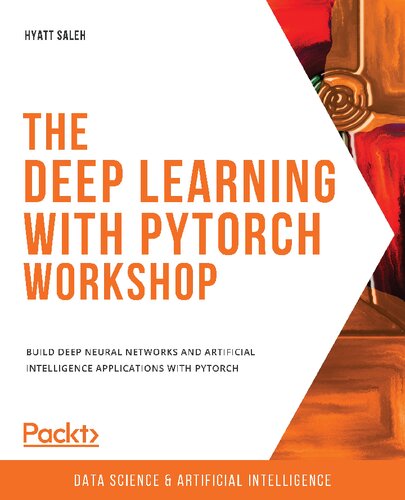

Most ebook files are in PDF format, so you can easily read them using various software such as Foxit Reader or directly on the Google Chrome browser.
Some ebook files are released by publishers in other formats such as .awz, .mobi, .epub, .fb2, etc. You may need to install specific software to read these formats on mobile/PC, such as Calibre.
Please read the tutorial at this link: https://ebookbell.com/faq
We offer FREE conversion to the popular formats you request; however, this may take some time. Therefore, right after payment, please email us, and we will try to provide the service as quickly as possible.
For some exceptional file formats or broken links (if any), please refrain from opening any disputes. Instead, email us first, and we will try to assist within a maximum of 6 hours.
EbookBell Team

4.3
48 reviewsGet a head start in the world of AI and deep learning by developing your skills with PyTorch
Key FeaturesWant to get to grips with one of the most popular machine learning libraries for deep learning? The Deep Learning with PyTorch Workshop will help you do just that, jumpstarting your knowledge of using PyTorch for deep learning even if you're starting from scratch.
It's no surprise that deep learning's popularity has risen steeply in the past few years, thanks to intelligent applications such as self-driving vehicles, chatbots, and voice-activated assistants that are making our lives easier. This book will take you inside the world of deep learning, where you'll use PyTorch to understand the complexity of neural network architectures.
The Deep Learning with PyTorch Workshop starts with an introduction to deep learning and its applications. You'll explore the syntax of PyTorch and learn how to define a network architecture and train a model. Next, you'll learn about three main neural network architectures - convolutional, artificial, and recurrent - and even solve real-world data problems using these networks. Later chapters will show you how to create a style transfer model to develop a new image from two images, before finally taking you through how RNNs store memory to solve key data issues.
By the end of this book, you'll have mastered the essential concepts, tools, and libraries of PyTorch to develop your own deep neural networks and intelligent apps.
What you will learnThis deep learning book is ideal for anyone who wants to create and train deep learning models using PyTorch. A solid understanding of the Python programming language and its packages will help you grasp the topics covered in the book more quickly.
Table of Contents